The Planning...
![TdP]() Head of the Valle Frances.
Head of the Valle Frances.
So we (my wife and I) were planning to spend 2 weeks in Chile, and while there spend 5 days hiking the W circuit in Torres del Paine (TdP) in Patagonia. After crunching the numbers we decided that we needed to trim the budget. Considering that airfare was almost half the budget, we realized we'd have to spend less time traveling in Chile and more time hiking. My wife and I are fairly avid hikers/runners. Myself more than my wife, but we're both in pretty good shape. Either the W or the full Circuit is most doable for just about anybody with a little planning and consideration for your abilities. For those of you that aren't familiar with trekking in Patagonia, TdP is a bucket list objective for anybody who loves the outdoors. TdP is like a national park and has really two main trails to choose from with several smaller, lesser known trails in the area. About 90% of people do what's called the W over about 4-5 days. It's called the W because it's shaped like a W and covers a distance of about 60 km/37 miles. The other option is called the Circuit and incorporates the W, but completes it into a loop and covers a distance of about 130 km/81 miles. This trip report will focus on our experience of the Circuit, but even if you're only planning to do the W you'll find this report helpful. I'm not going to cover every minor detail or give a complete introduction here, but will fill in some blanks that I wasn't able to figure out or completely understand until I was there. If you're considering visiting here you'll need to do some additional reading to fully understand how to hike in TdP.
As I said before, most people only do the W, but we decided to do the whole Circuit since we had time, and camping was a lot cheaper than renting a car and driving through other parts of Chile. For the trek we allotted 9 days, and most guides will say 7-9 days is typical. Most guides will also tell you that most people do the Circuit in a counter clockwise direction starting at the Hotel las Torres (located near the end of the brown highlited section). We decided to go in a clockwise direction because I had already made a couple of camping/refugio reservations and didn't want to lose them by changing direction and thus affecting the days where we would be in certain places. Refugios, you may ask? Well, it is entirely possible to trek either the W or the Circuit and never have to camp in a tent, or even carry your own tent. There are established "hostels" called refugios along the trail. In these you can rent a bunk bed, buy a hot breakfast/dinner, sack lunch, bottles of wine, beer, snacks, etc., or rent a tent, sleeping bag, sleeping pad, etc. and camp outdoors. At the Los Cuernos site you can even rent a private cabin (more on refugios below). The first thing you'll need to do is decide on the W or the entire Circuit, then where you want to start (Paine Grande by way of the catamaran across Lago Pehoe; or from Hotel las Torres), and if you want to go clockwise or counter clockwise.
![Torres del Paine Map]() The yellow section shows the typical W trek, and combined with the brown section shows the typical full Circuit trek
The yellow section shows the typical W trek, and combined with the brown section shows the typical full Circuit trekReservations, or Wing the Paine?
I'm a self admitted planner. That's what I do because I'm afraid of missing something if it's my one and only chance to visit someplace. We had originally planned to make this trip in early September, but then we found out a lot of the established camping areas and refugios don't open until November (remember TdP is in the southern hemisphere so November means spring time). So, we re-planned our trip for late November to take advantage of the Thanksgiving holidays and 2 free days of vacation time. The busy season for TdP really doesn't get geared up until mid-December and runs through February (their summer months). Since we were there in spring time, and hence early season we would probably have been fine without reservations, but if you go during peak season you may end up without a place to sleep in the refugios, although I've heard that if you're tent camping they'll find you a spot. The more popular refugios, and especially the indoor beds, tend to fill up very quickly so play it safe and plan ahead. I was surprised by how many people we met in the area and on the trail who had no plans what so ever. It's like they woke up, grabbed a jacket and a snack and decided to hike for 5 days. We found out a lot of people make their reservations the night before from each camp site or refugio (the rangers at each location have radio contact with all of the other sites), or just show up altogether and hope there's room. The refugios and most campsites (some are free) in the park are run by two different companies and you'll need to visit each one's website to see their services. Note that if their website shows no availability you should email them because they often do have space and their website is just wonky. The first company is
Fantastico Sur and the second is
Vertice. The free campsites are administered by the Park and are on a first come basis. We used a mixture of reserved camp sites, a couple of refugios, and some free camping.
Plan the Paine!
So we decide to start at the Hotel las Torres and go clockwise for 9 days. This was our planned itinerary for each day:
- Campamento Torres which is a free campsite and the nearest to the Torres del Paine for which you're there to see. Note that this campsite (and I assume is true for all free campsites) has a 1 night limit. However, we asked because it was half empty and we were allowed to stay a 2nd night.
- Campamento Torres again. This works out well if you have time because it gives you a 2nd morning to get up early (leave camp by 4:30 am) to see the sunrise on the Towers. I recommend taking a day trip to Campamento Japones and beyond if you have this 2nd day to explore. Be aware that "technically" Japones is for "guided trips only" and there's even a sign telling you to turn around. It's up to you how much of a rule follower you are...
- Refugio Cuernos. We stayed in the refugio in common bunk bed rooms this night because the winds were high (70mph+)
- Refugio Cuernos again, but this night we stayed in a private cabin. We were originally supposed to stay in the cabin on night 3, but I screwed up the reservations and didn't want to waste the money we spent reserving a cabin. In hindsight, don't waste your money on a cabin. It's no better than the bunk bed rooms and the showers are actually worse.
- Campamento Italiano. Before getting to TdP I had read that Italiano was closed and we had planned to spend nights 4 and 5 at Campamento Britanico. Both sites are free. However, note that Britanico sits at the head of the French valley and would be a royal pain in the butt to get to with a big pack. Unless you plan to spend an extra day exploring "off trail" above Britanico save yourself the trouble and camp at Italiano.
- Refugio Grey. This is by far the nicest of the refugios and is well worth the small premium to sleep inside in a bunk bed instead of in a tent. The bathrooms are nice, and the food is great. It's HIGHLY suggested, and if you're doing the whole Circuit this is a good mid-point to recuperate a little.
- Campamento Paso (note that Campamento Los Guardas is closed permanently but still appears on some maps). This is a tiny free camp site and is usually a stop over for people right before they attempt/finish the pass (John Gardner pass) from either side. Although, some people (and remember most people go in the other counter clockwise direction) camp at Los Perros and then cross the pass and continue all the way to Refugio Grey. Campamento Paso does not have rental tents I don't think so this is a camp meant for self sustained hikers.
- Refugio Dickson. We crossed the pass and continued beyond Campamento Los Perros to stop at Dickson. This is a tiny refugio and you can stay inside, but we camped outside in our tent. This was also our longest trail day.
- Campamento Seron. This was our last stop before completing the Circuit. No inside beds are available here, just tent camping.
![TdP Day 1]() My wife and I starting the Circuit on a blue bird day.
My wife and I starting the Circuit on a blue bird day.![Torres del Paine at Sunrise in b&w]() The Towers at sunrise in b&w.
The Towers at sunrise in b&w.Other Paine-ful Notes for Planning
- My wife and I both agreed that we liked doing the Circuit clockwise instead of counter clockwise with all the other folks. Why?
- You're not stuck with the same bunch of people hopping from one camp to the next. We were often the only people going the direction we were going and saw very few people except in camp.
- The wind comes off of the icefield and blows from west to east most of the time. When going up the pass this puts the wind at your back.
- In bad weather (snow) the pass is much more easily crossed from west to east instead of east to west. Plus, the trail from Campamento Los Perros up and over the pass is looooong and would make for a long day of constant uphills. The trail from Campamento Paso is steeper for sure, but then it's a nice loooooong downhill on the other side.
- If you spend 9 days hiking like we did, by the time you get to the end you're tired and ready for a soft bed, lots of food, and no pack hauling. If you go counter clockwise and don't start by seeing the Towers you'll end up waiting to see them at the very end of your trip. By then you'll be used to the amazing scenery and the Towers just won't be as dramatic. Plus you'll be thinking about that soft bed and cold beer at the hotel more so that getting up at 4:30 to see the sunrise.
- The front side (the W) is just amazingly dramatic scenery all day long. The backside is much more mellow. I enjoyed seeing the dramatic scenery up front when I was energetic and wide-eyed, and then seeing the more mellow areas when I was tired and winding down my trip.
- Plan for all types of weather and BELIEVE IN THE WIND!!! We had warm days, drizzly days, cloudy days, snow days, and windy days. Sometimes all in the same day. You need to wear layers, but sometimes the weather changes so fast it's just not practical to stop, take off your pack, put on/take off a layer, and then get strapped back up. Just decide if you'd rather be a little cold or a little hot and dress that way. I preferred to dress so I would be cool, and then put on a wool hat or gloves when needed. I could then also take them off and stash them in my pockets when I got warm. I'll talk more later on clothing recommendations. The weather also tends to be better & less windy in the mornings than in the late afternoons.
- If you plan to tent camp you can take your own tent (we did) or rent gear (tent, sleeping mats, sleeping bags, etc) there. The rental gear (available at a LOT of places in Puerto Natales or from the refugios) seems to be good quality, but I prefer to know the tent & sleeping bag I will depend on. It's also helpful when packing up at home to not have to remember, "oh yeah, I'll also be carrying a tent and sleeping bag which I won't have until I get there so I need to leave space..."
- Puerto Natales is the main jumping off point for TdP. On Sundays most stores are closed until late afternoon, and then only a few are open. You can buy canister gas at Erratic Rock and they also have partially used containers you can take for free. If you plan to buy a lot of stuff in Puerto Natales before starting it's worth making sure you have a day other than Sunday to procure your gear. The only exception is food. There's a nice grocery store that's open all the time.
- Also in Puerto Natales at the Erratic Rock hostel they have an information session every day at 3:00. It's a good talk for about an hour and a half. However, I didn't really learn anything I hadn't already read online. Don't fret if you miss it, but it also doesn't hurt to go by there.
- Give yourself an extra day on the front end and on the back end if possible in case you miss a flight, or bus, etc. If you don't, then you'll have an extra day to relax or site see.
- The sun didn't set until around 11:00 or 11:30 so you can hike late. Just note that "technically" the trails do have closing times, but nobody patrols them. If you get into a camp late you may get questioned by a ranger but oh well.
- The refugios all take credit cards (Visa, MC, Amex) and if you want to run a tab you can so you don't have to run your card 6 times a night.
- Food and drink at the refugios is expensive (they bring most of it in on horseback). For example, dinner will cost about $20 each, a beer is $5 each, a bottle of wine is about $25, and chips/snack is about $5-$7 each.
- You can pay the park entrance fee in American dollars, credit card, or Chilean pesos.
- You can drink the water from the streams/rivers without filtering. I normally use a UV "purifier" whenever camping and I took mine. However, we read and were told you can drink without filtering. We did so and had zero issues. Just use some common sense on where you get your water.
- They are SERIOUS about no fires or cooking in "unapproved areas". I read on line about a guy who got caught earlier in 2013 using a camp stove beside the trail between two camps and he was fined $50,000. In case you didn't know, TdP had a really bad forest fire about 3-4 years ago and you'll be told a hundred times "no camp fires, no smoking/cooking outside of cook shelters". Some people still used their stove to heat up water in their tent vestibules, but be cautious and sneaky if you have to.
- Pack it in, pack it out. There are no trash cans on the trail. The refugios do have recycle bins if your waste is recyclable.
- The refugios and camp sites all have toilets. Refugios have showers. Most but not all toilets have toilet paper. Bring your own, but you can pack on the lighter side. Beware the "toilet" at Campamento Paso is all I'm gonna say.
- Bring sunglasses. You'll need them even if it's not sunny because the wind will blow sand/gravel into your eyes. It literally hardly ever stops blowing.
- Bring trekking poles to brace yourself when the wind gets really bad. I think they help speed up the hike, too. I'll talk more about our gear later.
- If you plan to do the entire Circuit I recommend a rest day somewhere. Especially if you're not used to hiking with a big pack.
![Valle Frances]() Valle Frances.
Valle Frances.![Unnamed Image]() We had to cross this bridge with a 40mph cross wind and try not to get blown off the other side. Have fun!
We had to cross this bridge with a 40mph cross wind and try not to get blown off the other side. Have fun!
Gear for Paine
- Packs: 88L for him; 60L for her; we also carried rain covers and a secondary strap to secure them to the packs due to the high winds; we used our detachable top lids for our day trips (you'll want something if your's doesn't detach).
- Tent: Marmot Limelight 2P; held up just fine in rain, snow, and 50mph wind gusts but make sure to use your extra guy out points.
- Sleeping: Big Agnes inflating pads and Marmot down bags + inflatable pillows; some people say don't take down bags to Patagonia because they stay damp/cold but we kept ours protected and had no problems.
- Hydration: water bladders and a couple of Nalgenes for getting water from the creeks and making hot tea.
- Misc: basic first aid kit, small survival kit, head lamps, trekking poles, book, ipod, tissue (nose and butt), bandanas (great for multi-purpose), pack towel for when you use the refugio showers, toiletry kit, plastic spade for trail side uh-ohs, and trekking poles.
- Clothing: Pretty much the same for him and her - Waterproof boots, soft shell pants, 4 pair undies & socks, 4 base layer t-shirts, 2 pair trekking pants (1 pair was convertable), high quality zip long sleeve, light fleece pullover for him/light down coat for her, wind proof fleece vest, long underwear bottoms, liner gloves (like running gloves), light gloves (like driving gloves), wool hat or ear warmer, and camp shoes/sandles. I would not recommend rain pants as you'll most likely not be in a heavy enough rain to use them, and if you are you'll be miserable anyway so just go with a good quality soft shell pant that will do double duty for you. I would not take a down vest/coat unless it's light and will pack easily, and if it gets damp/wet it's useless unlike a fleece, but my wife had not problems with hers.
- Food: we carried granola bars and Cliff bars for breakfast/lunch. We carried freeze dried meals for dinner. We carried in some hard candy and small chocolate bars as mid-day treats and desert. We didn't claim any of it at customs coming into the country and weren't searched, but I don't think they would have objected even if they found it since it was all pre-packaged and cooked. Freeze dried meals & Cliff bars are not available down there. It's worth it to carry that type of thing from here if that's your style.
- Cooking: MSR multi-fuel stove thinking I would use white gas. However, since we arrived on a Sunday the hardware stores were closed and that's the only place you can buy it. My MSR Pocket Rocket would have been better since the canister fuels are super easy to find and 1 of the double sized canisters lasted us all week with plenty to spare. We heated water at night for the freeze dried meals and heated water in the morning for hot tea.
- Trash bags: You'll need 1 to pack your trash in, and it's good to have 2 extras (1 to put your sleeping bag/compression sack in; and 1 to cover the top of your pack before you sinch it up) to help keep rain out of your gear.
- Stuff sacks: I use the Sea to Summit silnylon stuff sacks to put my clothes and camera gear in. I used a small roll top dry bag to keep our cell phones/passports/papers in.
All total our packs (including the weight of the pack itself) was about 55 lbs for him (including about 10 lbs of camera gear) and about 40 lbs for her. This also included about a liter of water each of us was carrying at any given time & our food for 9 days. If you go the easy route and stay in refugios and buy all your meals there you could very easily carry a light day pack and carry no more than 10 lbs....but that's the pansy way to go + you'll spend a lot of money!
Epic Paine
First, let me say that we had a great time in Chile and TdP, but we almost didn't make it out of Santiago, or make it back home. Anybody who's traveled much can tell you some horror story or other about lost passports, lost luggage, bad food, or delays. We had been fortunate on all counts up until this trip.
Our journey started from Nashville, then to Miami, on to Santiago, with a final connection to Punta Arenas. I booked our RT tickets online and followed the suggested flight segments on Kayak. Kayake had given us 1.5 hrs in Santiago to go through customs before our connection to Punta Arenas. I thought it might be close but it turns out we were WAY off. When you get to Santiago you first have to pay your Reciprocity Fee of $160 US, then go stand in the line for immigration, and then go through customs before having to go back to the ticket counter to recheck your bags. The immigration process isn't clearly defined, and the signage telling you where to pay the $160 fee is nearly invisible. We had to ask. By the time we got back up to the ticket counter our flight had already left. Here's where the trouble began.
I spoke just enough spanish to explain our situation and was told we'd be on the next flight as a standby. Ok, that made sense. Well, that flight was full and we were told to wait for the next flight. That one was full also, but by now some folks who had arrived after us had made it onto the 2nd flight. I started to figure out something was wrong and by now we had been waiting for about 6 hours, with another 9 hour wait in our future. There's a Holiday Inn attached to the airport, but it was full so we had to find some place to be comfortable until our designated 1:00 AM check-in time. Well, at 1:00 on the dot I stood in line, and again, I get the run around and I'm about to say just put us on the next flight back home. After I explained to the agent in broken spanish (again) that I had been waiting for 15 hours and saw her look of shock she got a manager involved. Computer screens are reviewed, keys punched, puzzled looks exchanged, and I roughly figured out that it looked like there was confusion about whether or not American Airlines had actually paid the local carrier for my tickets (which American Airlines owns by the way). With only minutes to spare before this flight left she gave us boarding passes and told us to hurry. We felt like Tom Hanks in that movie when he had to live in the airport. Well, we made it Punta Arenas and then took a colectivo (group taxi van) to the bus station at the wee hours of the morning. Then, we stood around in the cold grey (and WINDY) morning waiting for the bus station to open.
We arrived in Puerto Natales by bus right on schedule and could not wait to get a shower and a rest. Our delay in Santiago had eaten up our free day in Puerto Natales, and we had to leave to go into the park the next morning. We did our required shopping that afternoon and repacked our bags for the early morning bus into the park. Our hike started off wonderfully and for the first several days we enjoyed the scenery, the mild weather, and good beer/wine. Then, one afternoon as we were casually walking along a hillside edge we were both literally blown off the trail by a sudden gust of wind. We could only laugh at the absurdity of it, stand up and continue on. Over the next several days the winds continued and we had to crouch and dig in with our trekking poles until it was safe to cross exposed sections of trail, cross a bridge, or climb down a ladder.
The morning we were scheduled to cross the pass we awoke to a dusting of snow and mild winds. We got up early and left camp before anybody else did. I assumed the weather and snow would be worse higher up on the pass and on the other side so we geared up early in camp in preparation for it. As we crossed the pass the snow became thigh deep in places and we were in a total white out. Through the pass (which is above treeline) the trail is marked with orange blazes on rocks (which were covered in snow usually) and orange pieces of piping sticking 6-8' out of the ground and spaced about 50 yards apart (but we could usually only see the top 3'-4' of the piping if at all). Numerous times we had to walk from pole to pole, and even back track when we lost sight of the next marker. We prayed just to see the next marker and we both new there was no going back. I felt confident in our abilities and gear and I knew we could find the next refugio even if we lost the trail. The accent up the pass took 2 hours, and the decent took about 4.5 hours. When we strode into camp we were greeted like lost explorers and questioned by everyone around what the pass was like. We advised that nobody try it that day heading into that weather, especially since it was already early afternoon. I think a few foolish souls left camp to attempt it in marginal gear and false hopes of following our tracks. I hope they made it or turned around early. But we continued on after a hot lunch.
The remainder of our trek was pretty uneventful. Continuously windy but not so bad. We finished up on another blue bird sunny day and enjoyed a hot sandwich and cold beers before catching the return bus to Puerto Natales to collect our left gear and the final bus back to Punta Arenas. We just wanted a hot shower and a soft bed. In Punta Arenas we found our hotel but found that the water was off because of a repair to the main line so we had to wait another day for that, but the bed was great. I normally wouldn't call out a specific business, but we stayed at the Hotel Ilaia and they were WONDERFUL. They even rose at 4:00 AM to cook us breakfast when we left, even though we told them it wasn't necessary. They recommended a restaurant for dinner (sorry can't remember the name) but it's one of their favorites and it was well worth it (I remember they take cash only). We visited the penguin colony on Isla Magdalena and I about froze to death. It's worth going to see but it's really just a wind swept smelly island full of small penguins.
![Unnamed Image]() Penguins.
Penguins.
Now it was time to go home, and considering our problems getting to Punta Arenas I wanted to make sure we could leave so we left the hotel plenty early in a cab the hotel called for us at 5:30 AM. We were at the airport, with bags checked and through security in 17 minutes. So we easily made it Santiago where we spent two uneventful days looking around. Santiago was starkly different than southern Chile and english speakers became harder to find. We rested up and did some strolling around but I wouldn't waste any time there. We got to the airport in plenty of time (again) only to find out that our flight to Dallas was cancelled. We stood in line at the ticket counter with everybody else for 2 hours trying to get on the midnight flight to Miami where we could drive home if we had to. We made it to the gate with minutes to spare. The downside was instead of flying from Miami back to Nashville we had to go to Baltimore, then get ourselves to Reagan National (in D.C. an hour away) for our connection to Nashville. An ice storm had been slowly wrecking havoc throughout the west and south, and then turned up the coast towards D.C. We landed in Baltimore just as the snow started to fall.
Oh, did I tell you that when we left Miami a passenger needed medical attention so we had to make an emergency landing in Orlando? Well, that meant we missed our connection in D.C. We finally made it to Baltimore and took the Super Shuttle to D.C. in a snow storm with fingers crossed we could make the next flight (which we did). Time to finally go home. Or not. Our flight was canceled and we were rescheduled for the next flight later that night, so we checked into the TGI Friday's for dinner and beers. After relaxing I asked my wife to double check the departure board to make sure our flight hadn't changed again. It had. "CANCELED". I sent my wife to the ticket counter while I paid the bill. By the time I found her the line was easily 3-4 hours long and my wife had gotten in line while it was still short. I go to get our bags at baggage claim while she sorts out our new tickets and gets discount voucher for a hotel room, but I'm ready to rent a car and drive home. Well, we ended up having to spend the night in D.C because there were no more flights anywhere close to home, and all the cars had been rented. Ugghhh. The next day our mid-day flight was again delayed just as another snow storm was starting to move in. After a 2 hour delay we actually left D.C and made it to Nashville.
Lesson(s) learned? First, we would have been far better off in Santiago if we had booked directly with the airlines. In this country and in Europe it's easy to take it for granted that different airlines and computer systems will all have your reservations coordinated. That's what I get for buying the cheap tickets online I guess. Second, I'm so glad we had the extra days scheduled into our trip, otherwise we would have had to cut our trip short or completely change the itinerary. Although we were a little worn from the wear, we didn't miss any time in the park, and arrived home 1 day later than expected. And third, patience can be a virtue but especially in Latin American countries you sometimes have to scream and yell to get the level of service you require when things go wrong. In the end, if all had gone smoothly, this post wouldn't be near as long, nor would I have as many stories to share. I have lots more photos
here.
![Unnamed Image]() The icefield is the source of all the winds. The next day we crossed the pass.
The icefield is the source of all the winds. The next day we crossed the pass.


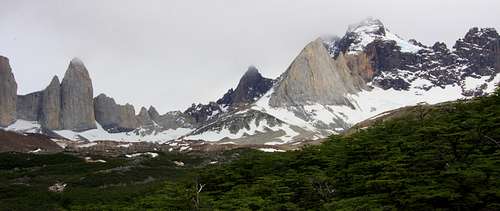
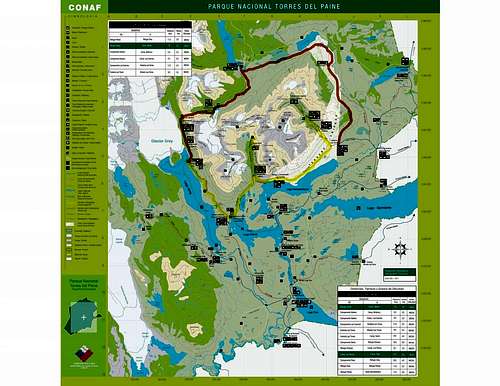
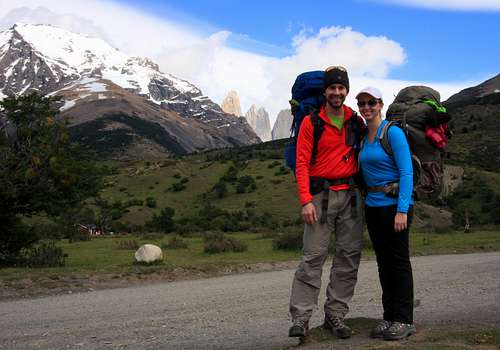


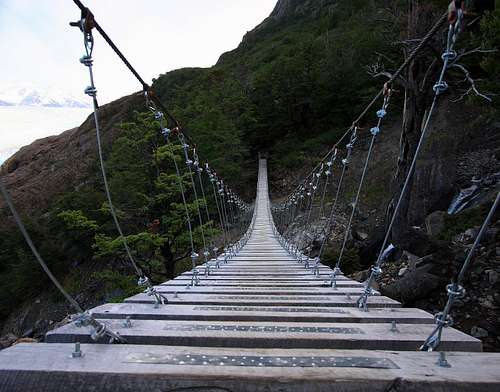
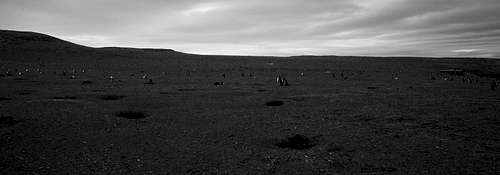
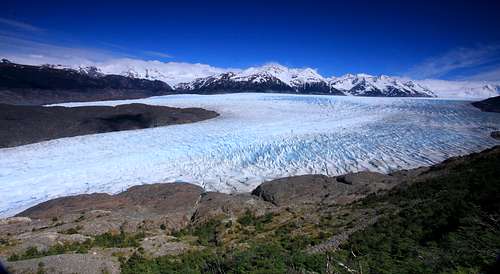
Comments
Post a Comment